#learn Django Python
Explore tagged Tumblr posts
Text
The Power of Python: How Python Development Services Transform Businesses
In the rapidly evolving landscape of technology, businesses are continuously seeking innovative solutions to gain a competitive edge. Python, a versatile and powerful programming language, has emerged as a game-changer for enterprises worldwide. Its simplicity, efficiency, and vast ecosystem of libraries have made Python development services a catalyst for transformation. In this blog, we will explore the significant impact Python has on businesses and how it can revolutionize their operations.
Python's Versatility:
Python's versatility is one of its key strengths, enabling businesses to leverage it for a wide range of applications. From web development to data analysis, artificial intelligence to automation, Python can handle diverse tasks with ease. This adaptability allows businesses to streamline their processes, improve productivity, and explore new avenues for growth.
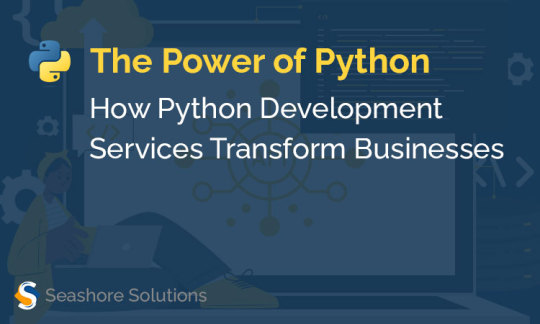
Rapid Development and Time-to-Market:
Python's clear and concise syntax accelerates the development process, reducing the time to market products and services. With Python, developers can create robust applications in a shorter timeframe compared to other programming languages. This agility is especially crucial in fast-paced industries where staying ahead of the competition is essential.
Cost-Effectiveness:
Python's open-source nature eliminates the need for expensive licensing fees, making it a cost-effective choice for businesses. Moreover, the availability of a vast and active community of Python developers ensures that businesses can find affordable expertise for their projects. This cost-efficiency is particularly advantageous for startups and small to medium-sized enterprises.
Data Analysis and Insights:
In the era of big data, deriving valuable insights from vast datasets is paramount for making informed business decisions. Python's libraries like NumPy, Pandas, and Matplotlib provide powerful tools for data manipulation, analysis, and visualization. Python's data processing capabilities empower businesses to uncover patterns, trends, and actionable insights from their data, leading to data-driven strategies and increased efficiency.
Web Development and Scalability:
Python's simplicity and robust frameworks like Django and Flask have made it a popular choice for web development. Python-based web applications are known for their scalability, allowing businesses to handle growing user demands without compromising performance. This scalability ensures a seamless user experience, even during peak traffic periods.
Machine Learning and Artificial Intelligence:
Python's dominance in the field of artificial intelligence and machine learning is undeniable. Libraries like TensorFlow, Keras, and PyTorch have made it easier for businesses to implement sophisticated machine learning algorithms into their processes. With Python, businesses can harness the power of AI to automate tasks, predict trends, optimize processes, and personalize user experiences.
Automation and Efficiency:
Python's versatility extends to automation, making it an ideal choice for streamlining repetitive tasks. From automating data entry and report generation to managing workflows, Python development services can help businesses save time and resources, allowing employees to focus on more strategic initiatives.
Integration and Interoperability:
Many businesses have existing systems and technologies in place. Python's seamless integration capabilities allow it to work in harmony with various platforms and technologies. This interoperability simplifies the process of integrating Python solutions into existing infrastructures, preventing disruptions and reducing implementation complexities.
Security and Reliability:
Python's strong security features and active community support contribute to its reliability as a programming language. Businesses can rely on Python development services to build secure applications that protect sensitive data and guard against potential cyber threats.
Conclusion:
Python's rising popularity in the business world is a testament to its transformative power. From enhancing development speed and reducing costs to enabling data-driven decisions and automating processes, Python development services have revolutionized the way businesses operate. Embracing Python empowers enterprises to stay ahead in an ever-changing technological landscape and achieve sustainable growth in the digital era. Whether you're a startup or an established corporation, harnessing the potential of Python can unlock a world of possibilities and take your business to new heights.
2 notes
·
View notes
Text
Start Your Python Journey Today!
Thinking about learning Python? You're in the right place! Whether you're just starting out or looking to level up your skills, Python is the key to unlocking opportunities in web development, data science, AI, and more.
Why Learn With Us?
👉 Friendly, expert instructors 👉 Hands-on projects (learn by doing!) 👉 Beginner-friendly, step-by-step approach 👉 Skills that actually matter in the real world
No complicated jargon—just simple, practical learning. Ready to dive in?
📌 Join us today and start coding!
0 notes
Text
Leveraging Django for Machine Learning Projects: A Comprehensive Guide
Using Django for Machine Learning Projects: Integration, Deployment, and Best Practices
Introduction:As machine learning (ML) continues to revolutionize various industries, integrating ML models into web applications has become increasingly important. Django, a robust Python web framework, provides an excellent foundation for deploying and managing machine learning projects. Whether you’re looking to build a web-based machine learning application, deploy models, or create APIs for…
0 notes
Text
Python With Django
Python courses in Nepal offer a comprehensive learning experience for individuals keen on mastering one of the most versatile and in-demand programming languages in the world. Python is renowned for its simplicity, readability, and wide range of applications across various industries, making it an essential skill for aspiring programmers, data scientists, web developers, and more.
If you would like to take a Python course in Nepal. You can check out this website. They offer a Python with Django course.
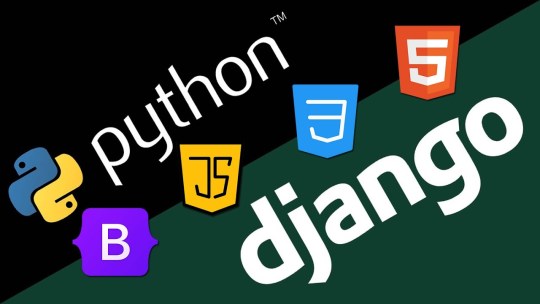
Course Module For Python With Django
1. Module 1
Module 1 starts off with an introduction, Django Installation, Django Project Setup, Working directories in Django and many more basic Python needs. It should take about 2 hours to finish module 1 and dive in deeper.
2. Module 2
Module 2 includes settings.py, Concept of apps, Request object, URLs in Django, URL concatenation, Dynamic URLs and many more. It also takes about 2 hours to understand this module.
3. Module 3
Module 3 includes Introduction to HTML, CSS and JS, Bootstrap for web development, Django Templates, Static hosting in Django and other Django principles. It is a module of 6 hours.
4. Module 4
Module 4 provides Function-based views and introduces class-based views, database settings, using SQLite database in Django, VScode extension for SQLite Database, Migrations and their commands, Introduction to Django admin, Creating a table model in Django and so on. It is an 8-hour module.
5. Module 5
In the 5th module, you learn to use HTML forms with Django, Media upload in Django, Create a simple CRUD application using function-based views and HTML forms (with Bootstrap) and so on.
There are many other modules and they make you fluent in Python. You can click here to learn more and enrol now.
For other similar courses, check this website.
0 notes
Text
Reshaping and Pivot Tables in Pandas
Unlock the power of data manipulation with Pankaj's latest blog! 🚀 Discover the secrets of reshaping data and mastering pivot tables using Pandas in Python. �� Dive in now and level up your data skills! 💡 #DataScience #Python #Pandas #DataManipulation
In this codes with Pankaj blog , we’ll explore how to reshape data and create pivot tables using Pandas, a powerful data manipulation library in Python. We’ll cover various methods such as pivot(), pivot_table(), stack(), unstack(), melt(), wide_to_long(), get_dummies(), from_dummies(), explode(), crosstab(), cut(), and factorize(). 1. pivot() and pivot_table() 2. stack() and unstack() 3.…

View On WordPress
#codeswithpankaj#coding#data-analysis#data-science#django#machine-learning#pandas#programming#python
1 note
·
View note
Text
#coding#css3#learn to code#software engineering#artificial intelligence#python#html5#frontend#html5 css3#htmlcoding#django#wordpress
0 notes
Text

1 note
·
View note
Text
#coding#angular#php#php programming#placements#training#laravel#php framework#php training#phpwebsitedevelopment#python#django#artificial intelligence#machine learning#technology#ai technology#ai tools#react js#reactjs
0 notes
Text
Exploring Python's Lambda Functions and Best Practices for Optimization in 2024
Python, a language known for its simplicity and versatility, continues to thrive as a programming powerhouse in 2024. Amidst its arsenal of features, lambda functions stand out as a concise and expressive tool, particularly when employed judiciously. In this blog post, we will delve into the nuances of lambda functions and outline the best practices for optimizing their usage in the ever-evolving Python landscape.
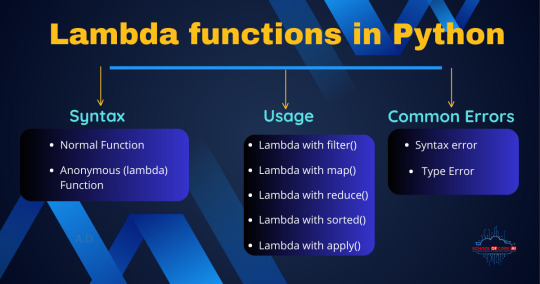
Lambda Functions: A Deeper Dive
Lambda functions, often hailed as anonymous functions, embody brevity and efficiency. Defined using the lambda keyword, they provide a succinct way to create small, ephemeral functions. The basic syntax is as follows:
Consider the following example, where a lambda function adds two numbers:
Lambda functions find their sweet spot in scenarios where a function is needed momentarily, often serving as arguments for higher-order functions like map(), filter(), and sorted().
Best Practices for Lambda Functions in 2024
1. Simplicity with Clarity
While brevity is a hallmark of lambda functions, clarity should not be compromised. Aim for simplicity without sacrificing understanding. If a lambda function becomes too complex, opting for a regular function may enhance readability.
2. Harnessing the Power of Higher-Order Functions
Lambda functions truly shine when paired with higher-order functions. Utilize them with map(), filter(), and sorted() for concise and expressive code.
3. Avoiding Complex Logic
Lambda functions are designed for simplicity. Steer clear of complex logic within lambda expressions; reserve them for straightforward tasks.
4. Consider Alternatives for Complexity
When facing complex operations or multiple expressions, consider using regular function definitions. This enhances code readability and maintainability.
5. Optimization: Embrace Built-in Functions
Python's built-in functions are optimized for performance. Prefer them over custom lambda functions, especially for straightforward operations like summation.
6. Testing and Profiling for Performance Gains
In performance-critical applications, testing and profiling are paramount. Leverage tools like Timeit and cProfile to measure execution time and profile code for potential optimizations.
Conclusion
As Python advances into 2024, the elegance and efficiency of lambda functions remain pivotal. By adhering to best practices and optimizing strategically, developers can harness the power of lambda functions effectively. For those looking to enhance their Python proficiency, the Python web development and DSA courses at Delhi’s SCAI Institute provide a structured and comprehensive learning journey. This ensures that Python code not only stays clean and readable but also performs optimally in the dynamic landscape of 2024 and beyond.
#python#django#python web development#software engineering#technology#artificial intelligence#machine learning
0 notes
Text
What Should I Do After Learning Python?

Congratulations! You've successfully learned Python, a versatile and powerful programming language that has opened doors to a world of possibilities. As you bask in the glory of this achievement, you might be wondering, "What's next?" Fear not, for this blog post is here to guide you through the exciting journey that lies ahead after mastering in Python...
0 notes
Text
Mysterycat
They couldn't keep me down
Prizes, giveaways, untold riches. None of them are found here I just make posts.


Lesbian
grown up adult
english, trying very slowly and badly to learn Russian.
Things i love a lot:
Games:
Skyrim
animal crossing
modded minecraft
fallout (All games. including 76)
Sims 1,2,3. 4 never happen
Baldurs gate 3
Tv:
Sitcom of all kinds. Literally my favourite media.
Some faves are: Its Always sunny in Philadelphia, Peep show, The Simpsons, Father ted, Black books, It crowd, Seinfeld, Red Dwarf, Fraiser, Futurama, American Dad, My name is Earl and Malcolm in the middle.
Cartoons: Adventure time, Foster's home for imaginary friends, Phineas and Ferb, Spongebob.
A few extra: Killing Eve, Sweet Home.
Movies:
Wall-e, The Ballad of Buster Scruggs, Django Unchained, What we do in the shadows, the Big Lebowski, Monty Python and the Holy Grail.
Books:
Discworld, Bill Bryson, His Dark Materials, American Psycho, Frankenstein and Dracula.
Music:
Jesse Welles, They Might Be Giants, The Hoosiers, The Chats, Therapy?, System of a Down, Louie Zong, Tally Hall, Jack Stauber, Lemon Demon, Kirsty MacColl, The Beatles, Artic Monkeys, The Inkpots, Ella Fitzgerald, Grizzly Bear, Weezer, Green Day, The Kinks, Hard Life, Phoenix, Beck, Soft Play, Credence Clearwater Revival, Blur.
Other hobbies: Gardening, pressing flowers, sewing, Drawing, painting.
Random:
Threatening to take over the world, roleplaying stupid things with my mutuals, Puns, Posts with the word mystery in (all of which are about me), spelling things terribly on purpose, Twitch streamer Joov, who will be tagged simple #joov if you want to filter this content.
Anyone can interact with this account, I literally don't care. If you annoy me I will block you. I like posting funny things, stuff about my hobbies and very cringey posts or images I find. These will not be tagged because I can't be bothered with it so just beware.
header and pfp by @mysterycat-isstillme thats right i made them get fucked
tags I actually bother with:
Goodnight refers to posts i make announcing I'm going to bed. I like to do this because i think its nice :)







#art#The Simpsons#peep show#goodnight#iasip#bg3#ms paint#dungeon meshi#adventure time#skyrim#minecraft#Spotify#mitm#looney tune#acnh#my art
29 notes
·
View notes
Text
Python for Beginners: Launch Your Tech Career with Coding Skills
Are you ready to launch your tech career but don’t know where to start? Learning Python is one of the best ways to break into the world of technology—even if you have zero coding experience.
In this guide, we’ll explore how Python for beginners can be your gateway to a rewarding career in software development, data science, automation, and more.
Why Python Is the Perfect Language for Beginners
Python has become the go-to programming language for beginners and professionals alike—and for good reason:
Simple syntax: Python reads like plain English, making it easy to learn.
High demand: Industries spanning the spectrum are actively seeking Python developers to fuel their technological advancements.
Versatile applications: Python's versatility shines as it powers everything from crafting websites to driving artificial intelligence and dissecting data.
Whether you want to become a software developer, data analyst, or AI engineer, Python lays the foundation.
What Can You Do With Python?
Python is not just a beginner language—it’s a career-building tool. Here are just a few career paths where Python is essential:
Web Development: Frameworks like Django and Flask make it easy to build powerful web applications. You can even enroll in a Python Course in Kochi to gain hands-on experience with real-world web projects.
Data Science & Analytics: For professionals tackling data analysis and visualization, the Python ecosystem, featuring powerhouses like Pandas, NumPy, and Matplotlib, sets the benchmark.
Machine Learning & AI: Spearheading advancements in artificial intelligence development, Python boasts powerful tools such as TensorFlow and scikit-learn.
Automation & Scripting: Simple yet effective Python scripts offer a pathway to amplified efficiency by automating routine workflows.
Cybersecurity & Networking: The application of Python is expanding into crucial domains such as ethical hacking, penetration testing, and the automation of network processes.
How to Get Started with Python
Starting your Python journey doesn't require a computer science degree. Success hinges on a focused commitment combined with a thoughtfully structured educational approach.
Step 1: Install Python
Download and install Python from python.org. It's free and available for all platforms.
Step 2: Choose an IDE
Use beginner-friendly tools like Thonny, PyCharm, or VS Code to write your code.
Step 3: Learn the Basics
Focus on:
Variables and data types
Conditional statements
Loops
Functions
Lists and dictionaries
If you prefer guided learning, a reputable Python Institute in Kochi can offer structured programs and mentorship to help you grasp core concepts efficiently.
Step 4: Build Projects
Learning by doing is key. Start small:
Build a calculator
Automate file organization
Create a to-do list app
As your skills grow, you can tackle more complex projects like data dashboards or web apps.
How Python Skills Can Boost Your Career
Adding Python to your resume instantly opens up new opportunities. Here's how it helps:
Higher employability: Python is one of the top 3 most in-demand programming languages.
Better salaries: Python developers earn competitive salaries across the globe.
Remote job opportunities: Many Python-related jobs are available remotely, offering flexibility.
Even if you're not aiming to be a full-time developer, Python skills can enhance careers in marketing, finance, research, and product management.
If you're serious about starting a career in tech, learning Python is the smartest first step you can take. It’s beginner-friendly, powerful, and widely used across industries.
Whether you're a student, job switcher, or just curious about programming, Python for beginners can unlock countless career opportunities. Invest time in learning today—and start building the future you want in tech.
Globally recognized as a premier educational hub, DataMites Institute delivers in-depth training programs across the pivotal fields of data science, artificial intelligence, and machine learning. They provide expert-led courses designed for both beginners and professionals aiming to boost their careers.
Python Modules Explained - Different Types and Functions - Python Tutorial
youtube
#python course#python training#python#learnpython#pythoncourseinindia#pythoncourseinkochi#pythoninstitute#python for data science#Youtube
3 notes
·
View notes
Text
Why Learning Python is the Perfect First Step in Coding
Learning Python is an ideal way to dive into programming. Its simplicity and versatility make it the perfect language for beginners, whether you're looking to develop basic skills or eventually dive into fields like data analysis, web development, or machine learning.
Start by focusing on the fundamentals: learn about variables, data types, conditionals, and loops. These core concepts are the building blocks of programming, and Python’s clear syntax makes them easier to grasp. Interactive platforms like Codecademy, Khan Academy, and freeCodeCamp offer structured, step-by-step lessons that are perfect for beginners, so start there.
Once you’ve got a handle on the basics, apply what you’ve learned by building small projects. For example, try coding a simple calculator, a basic guessing game, or even a text-based story generator. These small projects will help you understand how programming concepts work together, giving you confidence and helping you identify areas where you might need a bit more practice.
When you're ready to move beyond the basics, Python offers many powerful libraries that open up new possibilities. Dive into pandas for data analysis, matplotlib for data visualization, or even Django if you want to explore web development. Each library offers a set of tools that helps you do more complex tasks, and learning them will expand your coding skillset significantly.
Keep practicing, and don't hesitate to look at code written by others to see how they approach problems. Coding is a journey, and with every line you write, you’re gaining valuable skills that will pay off in future projects.
FREE Python and R Programming Course on Data Science, Machine Learning, Data Analysis, and Data Visualization
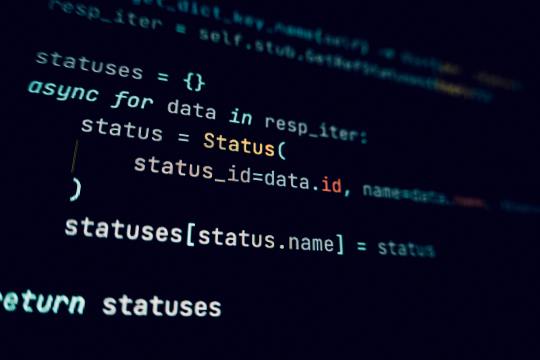
#learntocode#python for beginners#codingjourney#programmingbasics#web development#datascience#machinelearning#pythonprojects#codingcommunity#python#free course
10 notes
·
View notes
Text
Exploring NumPy: From Basics to Advanced Techniques
Master NumPy with ease! Our guide delves into array manipulation, math functions, and data analysis. Whether novice or expert, unlock the full potential of Python. #NumPy #Python #NumPy #DataAnalysis #MachineLearning
NumPy, short for Numerical Python, is a fundamental package for scientific computing in Python. It provides support for arrays, matrices, and a host of mathematical functions to operate on these data structures. This blog post will guide you through the basics of NumPy and its powerful features. Step 1: Check Python Installation Step 2: Install NumPy Step 3: Verify NumPy Installation Step 4:…
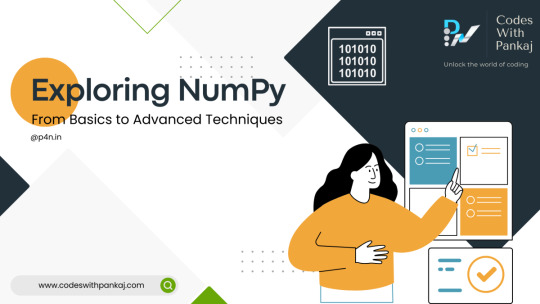
View On WordPress
0 notes
Text













Life update
being a 3rd year computer science student is no joke that i forgot about my tumblr. I have been spending most of my money on co working cafes and a lot of coffffeeee! I need help.
been learning a lot about API lately.
I have been learning django, angular, python, and php this sem
I AM NOT OKAY, i want guilt free sleep LOL
I hope i can post more ( ͡ಠ ʖ̯ ͡ಠ)
6 notes
·
View notes
Text
How to Build Software Projects for Beginners

Building software projects is one of the best ways to learn programming and gain practical experience. Whether you want to enhance your resume or simply enjoy coding, starting your own project can be incredibly rewarding. Here’s a step-by-step guide to help you get started.
1. Choose Your Project Idea
Select a project that interests you and is appropriate for your skill level. Here are some ideas:
To-do list application
Personal blog or portfolio website
Weather app using a public API
Simple game (like Tic-Tac-Toe)
2. Define the Scope
Outline what features you want in your project. Start small and focus on the minimum viable product (MVP) — the simplest version of your idea that is still functional. You can always add more features later!
3. Choose the Right Tools and Technologies
Based on your project, choose the appropriate programming languages, frameworks, and tools:
Web Development: HTML, CSS, JavaScript, React, or Django
Mobile Development: Flutter, React Native, or native languages (Java/Kotlin for Android, Swift for iOS)
Game Development: Unity (C#), Godot (GDScript), or Pygame (Python)
4. Set Up Your Development Environment
Install the necessary software and tools:
Code editor (e.g., Visual Studio Code, Atom, or Sublime Text)
Version control (e.g., Git and GitHub for collaboration and backup)
Frameworks and libraries (install via package managers like npm, pip, or gems)
5. Break Down the Project into Tasks
Divide your project into smaller, manageable tasks. Create a to-do list or use project management tools like Trello or Asana to keep track of your progress.
6. Start Coding!
Begin with the core functionality of your project. Don’t worry about perfection at this stage. Focus on getting your code to work, and remember to:
Write clean, readable code
Test your code frequently
Commit your changes regularly using Git
7. Test and Debug
Once you have a working version, thoroughly test it. Look for bugs and fix any issues you encounter. Testing ensures your software functions correctly and provides a better user experience.
8. Seek Feedback
Share your project with friends, family, or online communities. Feedback can provide valuable insights and suggestions for improvement. Consider platforms like GitHub to showcase your work and get input from other developers.
9. Iterate and Improve
Based on feedback, make improvements and add new features. Software development is an iterative process, so don’t hesitate to refine your project continuously.
10. Document Your Work
Write documentation for your project. Include instructions on how to set it up, use it, and contribute. Good documentation helps others understand your project and can attract potential collaborators.
Conclusion
Building software projects is a fantastic way to learn and grow as a developer. Follow these steps, stay persistent, and enjoy the process. Remember, every project is a learning experience that will enhance your skills and confidence!
3 notes
·
View notes